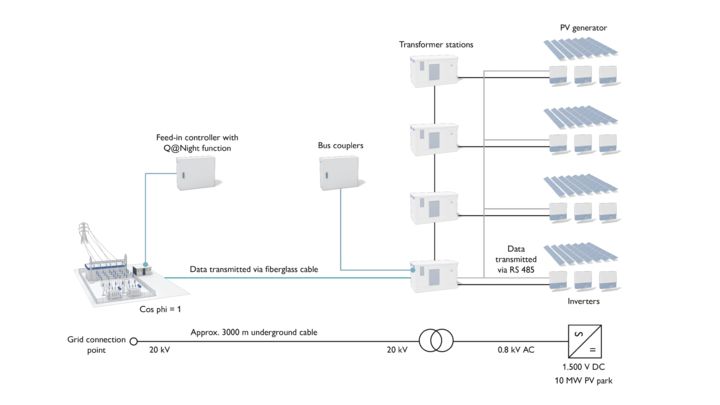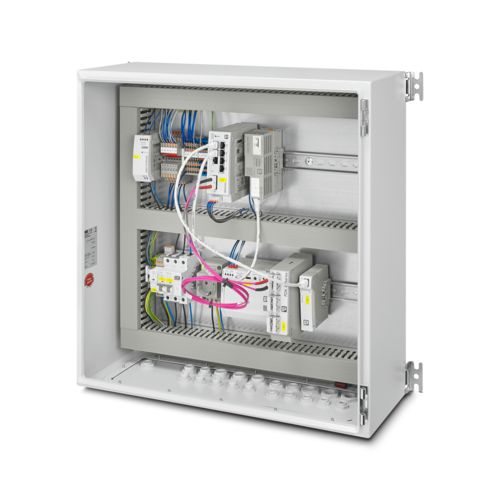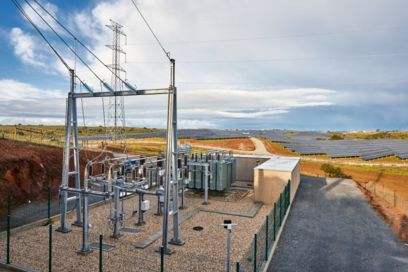Intelligent control technology compensates for power dissipation To ensure that reactive power does not have to be purchased from the grid operator, Phoenix Contact has developed a special control function, which is already in use in a PV park in Germany.

Customer profile

Christopher Werlitz, ASG Engineering GmbH
ASG Engineering GmbH, based in Saxony-Anhalt, Germany, was founded in 2007 and specializes in consulting, planning, implementation, and operational management of photovoltaic systems.
Their range of services also includes integrating systems and storage systems into the existing infrastructure to ensure the optimized use of self-consumption. In addition, the company also specializes in peak shaving and storage solutions for micro-grid systems.
The challenge

Grid connection point in the Dessora industrial park
This project is a 10 MW PV park at the Dessora Industrial Park in Oranienbaum-Wörlitz in eastern Saxony-Anhalt, Germany.
The energy generated in the PV park is first transmitted via a three-kilometer-long underground cable to the grid connection point, where it is finally fed into the grid. Due to the long cable length, capacitive power losses occur, particularly at night. The transformer stations in the park also generate losses. The typical reason for this is inductive power dissipation. Normally, the park operator would have to purchase reactive power from the grid operator to compensate for such power dissipations. The financial cost of such purchases would add up to a mid-range five-digit amount over the course of a year.
The solution

Solution for feed-in management
Solution
The Phoenix Contact feed-in controller based on PLCnext Technology is installed at the grid connection point. This device, certified in accordance with the German Directive VDE-AR-N 4110/4120, ensures that decentral power generation plants that are connected to medium and high-voltage grids feed in electricity in accordance with the grid requirements.
Since the hardware and software of the feed-in controller can be adapted individually and project-specifically at any time, the device can be expanded to include the Q@Night control function. The term Q@night comes from the concept of reactive power control at night. The Q@Night controller function programmed by ASG Engineering and integrated into the Power Control Unit ensures that the inverters in the photovoltaic park do not shut down during the night, as is normally the case. Instead, they continue to provide reactive power in order to achieve a phase shift of precisely cos hi = 1 at the grid connection point. In this way, the inductive and capacitive properties of the park equipment – i.e., cables and transformers – are balanced.

Due to this controller function, the park operator saves more than €20,000 per year
The specifications for the inverters installed in the field come from the bus coupler
The control signals for the Q@Night control function are forwarded via a fiber-optic cable to an Axioline F BK ETH bus coupler, which is installed in one of the four transformer stations in the PV park three kilometers away. RS Uni modules are aligned with the bus coupler and allow I/O devices with a serial interface to be operated on the bus system. The inverters, which are connected in a star configuration in 16 strings, receive the instructions required for both feed-in control and reactive power control at night from the bus coupler via RS485 data communication.

Contact person

Summary

Summary
The Q@Night controller function implemented on the feed-in controller avoids the costly additional purchase of reactive power. The open control platform enables fast and reliable engineering as well as project-specific adjustments.

Cooperation between ASG Engineering GmbH and Phoenix Contact

Still haven’t found the right product?
Feel free to contact us. We will consult with you to find the ideal solution together.



